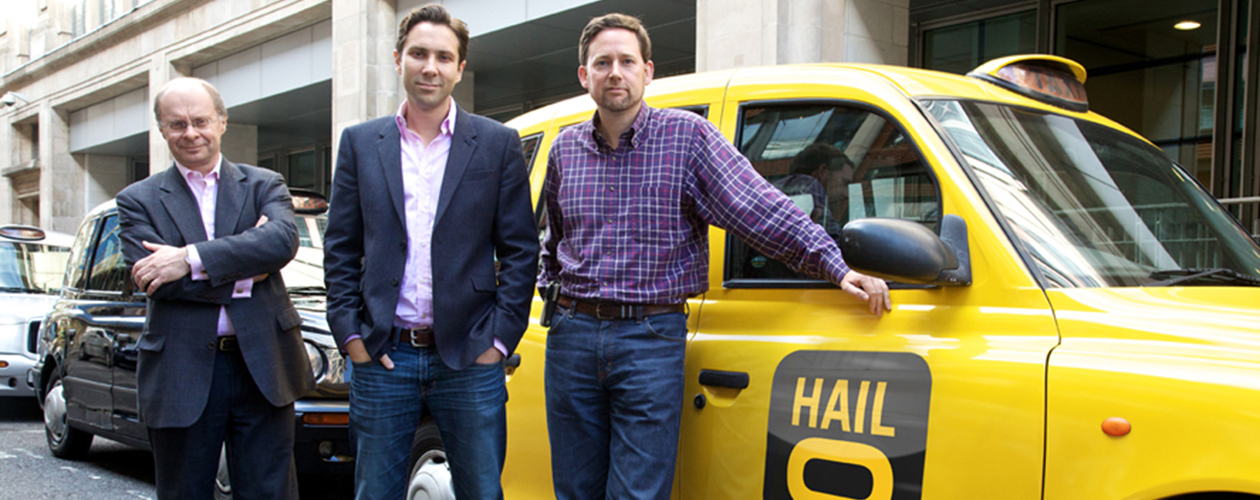Online taxi business has been in top form in the last few years. It appears that many great apps reached their success by offering trustworthy solutions for all users who live or travel in big cities.
In this blog, we shall discuss the top Success Stories in Online Taxi Business. It will be a good opportunity for you to explore interesting strategies that have worked for these businesses so that you can build a successful online taxi business and a perfect Taxi Booking software for yourself.

Bhavish Aggarwal is the CEO and founder of the most popular Ola cabs in India.
Bhavish Aggarwal was born in Ludhiana. On 2008, he completed his studies in IIT-B. He begins his career with Microsoft Research and worked for around 2 years. After he quits Microsoft, he started olatrip.com to give customers customized tour packages.
However, the real turning point came when Bhavish was traveling from Bangalore to Bandipur in a Taxi. The driver has stopped in the middle of the journey and started negotiating the amount to be paid. When Bhavish doesn’t agree with the proposal, he was dropped in the middle of the road.
This incident has given the spark for Bhavish Aggarwal to start his own Ola taxi business. Ola was started in 2010 with a mission to give quality service at an affordable rate.
In the early days, Bhavish did everything to make the customers happy. Including taking up the role of the driver and dropping the customer when the Ola driver didn’t turn up on time. It is this commitment and dedication by the founders and the team that made Ola a grand success.
Instead of buying cars, they have allowed the local Taxi drivers to attach to Ola and have introduced Mobile App for booking cabs. Soon after it’s launch, it was a grand success. Ola cabs charge Rs.6 per KM which is less than an Auto and Ola share is charged approx at Rs.3 per Km.
Ola provides Taxi service for around 102 cities in India with over 1 million requests every day. Valued over 5 Billion dollars currently, it has around 350,000 vehicles serving 25 Million customers. It is the market leader with 78% share.
Source:https://www.yosuccess.com/success-stories/bhavish-aggarwal-olacabs/

Uber’s story began in Paris in 2008. When two friends Travis Kalanick and Garrett Camp attended an annual tech conference, the Economist described the event as the place “where revolutionaries gather to plot the future”.
In the year 2007, both of them sold out their startup firms for a huge sum of money. Kalanick sold Red Swoosh to Akamai Technologies for $19 million while Camp sold StumbleUpon to eBay (EBAY) for $75 million.
The idea behind the formation of Uber is really interesting. On one winter night after the conference, the pair was unable to find out a cab. That’s when the idea struck. In the beginning, it was for a timeshare limo service which could be ordered via an app.
After the conference, the entrepreneurs went their separate ways, but when Camp returned to San Francisco, he continued to be fixated on the idea and bought the domain name UberCab.com.
In the year 2009, Camp worked on the Uber project as a side project, even though he was the still the CEO of StumbleUpon. By summer of that year, Camp had persuaded Kalanick to join as Uber Cabs ‘Chief Incubator’.
The service made its test run in New York in the year 2010 using only three cars, and the official launch took place in San Francisco in May.
Ryan Graves became the CEO of Uber in August 2010. He was an important figure and the General Manager, in the early stages of the company. In December 2010, Kalanick took over again as CEO. ANd Graves took charge as the COO and board member.
The process of hailing a taxi or a cab was so easy and this led to the rise in popularity of the app. A ride could be initiated with the tap of a button; GPS identifies the exact location and the cost of the journey is calculated automatically (which would be deducted from the card linked to the user account).
The company received its first major funding of $1.25 million in October of 2010 by the First Round Capital.
In October 2010, the company received a cease-and-desist order from the San Francisco Municipal Transportation Agency. One of the main issues cited was the use of the word “cab” in Uber Cabs name.
The startup promptly responded by changing the name UberCab to Uber. They also bought Uber.com domain name from Universal Music Group.
2011 was a crucial year for Uber’s growth. Early in the year, the company raised an $11 million Series and it went on to expand to New York, Seattle, Boston etc as well as abroad in Paris.
In December at the 2011 LeWeb Conference, Kalanick announced that Uber raised $37 million.
By 2012, the company broadened its offering by launching UberX, which provided a less expensive hybrid car as an alternative to black car service. Uber raised an amount of $3.5 million from Saudi Arabia’s Wealth Fund in the year 2016.
It has a merchant delivery program for food called UberEATS. They also offer UberPool, which allows drivers to pick up multiple riders on one side, which makes it a cheaper option compared to UberX and UberBlack.
The company even rolled out a co-branded rewards credit card in partnership with Barclays in the US. The Uber Visa Card reportedly will be free and come with a $100 starting bonus. It also offers cash back on spending including dining out, airfares etc.
Source:https://www.investopedia.com/articles/personal-finance/111015/story-uber.asp

In a market that is mostly dominated by Uber, Lyft managed to gain 35% of the market share in a span of just 3 years after starting its operations. The company has a strong set of principles it closely adopt that has lead to its steady growth.
These are the values by which Lyft abides by.
Mission-based values: Lyft paved the road for a peer-to-peer ride-hailing experience, unlike the Uber, which describes themselves as a black car service.
According to Lyft’s VP of Marketing, Melissa Waters, their mission is to “improve people’s lives through the world’s best transportation. Our vision was to reinvent cities around people, not cars.”
Community building: Lyft concentrates on building an employee atmosphere which fosters human connection and feel-good experience.
The three values that Lyft instills in the driver onboarding process are, “be yourself, uplift others and make it happen”, Walters adds. And this is the reason why Lyft has earned the reputation of being more personable and community-oriented than its competitors.
Environmental awareness: Lyft also pledges to build a more environmentally and socially responsible business. While the major share comes from automobiles, Lyft is also positioning itself to expand to scooters, bicycles, and other more environmentally friendly modes of transportation. It is also exploring the options of driverless car space.
Social activism: Lyft has always taken care of building consumer goodwill when considered from a social impact perspective.
Lyft donated $1 million to the American Civil Liberties Union (ACLU) in response to the Trump administration’s travel ban and Uber refusing to participate in a related strike at JFK airport. Soon after the incident, the number of downloads exceeded Uber for the first time on the Apple Apple store.
Lyft provides the option to donate to charity on each ride. And thus Lyft exhibits its socially responsible business ethos. The company also implemented the Ride Safe program which ensures that the riders get home safely after a night of drinking.
Lyft also takes part in relief rides for events like ‘March For Our Life’ to empower drivers and passengers to take a stand for what they believe in. Their environmentally and socially responsible business while cultivating human-to-human connections has set the brand on a road to success.
The Road Ahead: It took Lyft 6 years to reach 1 billion rides, which was roughly the same for Uber. That said, it took Uber just 6 months longer to reach 2 billion rides and one year to hit 5 billion. Unlike Uber, which operates around the world, Lyft only offers rides in the United States and Canada.
Both companies saw a slump in the number of rides and new riders in summer 2018. It follows that Lyft faces challenges in terms of revenue growth and may have to expand its business in innovative ways that open new markets.
In response, the second largest rideshare app has plans to go public in 2019, which will open up more capital and could lead to new growth opportunities.
Lyft has done an excellent job building its brand around purpose. On the other hand, steep competition and financial goals present challenges for the brand. Lyft’s competitive advantage stems from its purposeful brand story.
If it holds true to its socially responsible foundation, increases profitability, and expands transparency with drivers, that brand story will be the difference between who leads the future of ridesharing in our cities.

To date, Hailo has raised over $50 million in funding, expanded into sixteen major cities, and there is a Hailo booking every 4 seconds. So what created this epically successful venture? Russell Hall, the co-founder of Hailo, joined Startup Grind London to tell us all about it.
Like all great entrepreneurs, Russell Hall (co-founder of Hailo) actually started with another idea, a web-based booking platform called Taxilight in 2009, with two other taxi drivers.
They quickly realized that it was not what they had envisioned and decided to leave Taxilight behind. But the real decision came when he met Peter Stringfellow, a successful British businessman himself. Peter Stringfellow told Hall, “It’ll be a success because you know the market you’re in!”
After that, the three cab drivers found three Internet entrepreneurs and the rest, is history. They worked together to solve a problem that they knew intimately and ended up revolutionizing a 350-year-old industry.

When Uber Technologies concentrated to conquer the field of ride-sharing around the world, Grab focussed on serving the 620 million people in Southeast Asia.
With the help of SoftBank Group Corporation, GrabTaxi emerged as the winner on one Monday when Uber agreed to swap its business in the region for a 27.5 percent stake.
The deal was a clear cut policy followed by the company under co-founder Anthony Tan’s strategy of tailoring services to local needs and working with incumbent taxi operators instead of against them.
Tan turned Grab into a ride-hailing master, with the $4 billion it obtained from the Softbank since it was born in a tiny room in Kuala Lumpur. The high funding helped him to lure top talent and survive through the losses generated with the competition over Uber to win over customers.
Now the 36-year-old Harvard grad, who spurned the family’s automotive empire in Malaysia to strike out on his own, has emerged stronger as he turns to his other significant competitor in the region, Indonesia’s Go-Jek.
The deeply religious Tan, who still attends Bible study classes, started Grab in his native Malaysia. With Harvard classmate Tan Hooi Ling, he kicked off operations for what was then known as MyTeksi in Kuala Lumpur, allowing users to book cabs.
Grab later relocated to Singapore and now provides a host of services from Indonesia to Vietnam and the Philippines. The company is valued at $6 billion by CB Insights, making it the most valuable startup in Southeast Asia.
If you are a budding entrepreneur, these success stories can tell you to take note of the following points.
With extensive experience in the London cab industry, Lyft’s sl launch was so successful because they knew more than their competitors. Hailo became a sensation through social media and eventually, the famous celebrities started endorsing them as well.
Hailo also makes sure that they keep this advantage whenever they are planning to expand. It also plays a big part in their monetization, tailoring their app for different markets. For instance, they charge drivers in Europe, whereas in the USA they charge the customer.
Without drivers, there wouldn’t be passengers for Hailo. So they concentrated on making the driver experience as easy as possible. They achieved it from making easy payments, helping to find jobs, to teaching them to use smart-phones and even setting up email addresses.
Always make a road map of where you are going and what you hope to do with the money you will be receiving. Hailo shows its future possibilities and expected delivery outcomes to every investor they approach.
As you meet these outcomes, it gets much easier in advanced investment stages because you have already seen some success and growth so you can be even more confident in what you’re selling. Hailo is so sure about what they are doing!
Trust is one of the important building blocks of success. Without trust in each other’s strengths, it would be hard to get anywhere. People are attracted to Hailo because they see the possibility of the app and they live the same dream as the founders, “We keep growing, so they keep growing.”
Stay focused and confident in whatever you do. Believe in your journey (even if it starts off as six guys on a boat in west London) and dreams! Set key goals for yourself and your team and celebrate them! For Russell, the next big moment would be when Hailo becomes an everyday verb.
If you are looking forward to starting an online taxi business, you can take a cue from these stories. Whatever be the case, you will need a taxi dispatch software. You can count on infinite Cab for that!
To know how to run a successful Taxi Business using Taxi Booking Software is essential to manage a taxi business.
Try a free Taxi Dispatch Software Demo to experience the features of the Online Taxi Booking Software.
Contact us today!
I am very glad that you shared such a wonderful post with us. Keep posting.